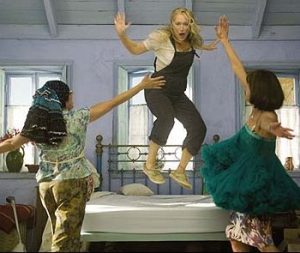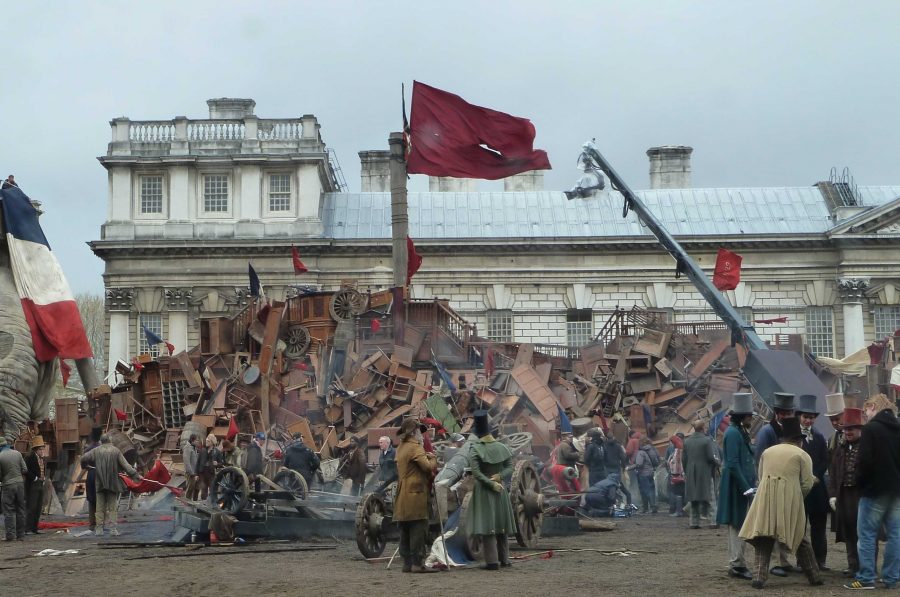The movie musical has been making a comeback in the last few years. Movies such as “Les Miserables” and “Into the Woods” have cast big-name stars and brought stage musicals back to life. Looking back through history, the MGM movie musicals which cast stars such as Gene Kelly and Fred Astaire were big deals in the early industry. They brought singing and dancing to the big screen for general audiences, making theater more accessible to the general public. However, the last few decades have generally seen fewer musical theater adaptations come to the big screen. There is seldom any singing, dancing or any type of musical theater influence in the average Hollywood production unless we are talking “High School Musical.” These movies, however, are part of a handful of exceptions. As of late, viewers have been seeing a new shift in the old becoming new again. Just as 90s fashion is back, the movie musical is coming back in full swing, but just because it is making a comeback doesn’t mean that it always should. The question remains, what actually makes a movie musical critically successful?

First off, in many of the recent movie musicals, directors have chosen big name movie stars, in an effort to help rake in the money in the box office. “Hairspray” used Queen Latifah and Zac Efron, “Les Miserables” used Russel Crowe, Anne Hathaway, Eddie Redmayne and a number of others, and “Into the Woods” cast James Corden, Emily Blunt and Meryl Streep. All of these actors are extremely talented and have made names for themselves in the movie industry. Movie musicals do their best to cast these individuals in order to guarantee at least a little profit from loyal fans. Essentially, general viewers have no faith in the story or the rest of the production, so stars get cast. More often than not, when movie stars get cast on Broadway, it’s often because the show is in need of a new draw to bring in audience members. The movie musical feels the same way.
Many of these movie stars do their musical roles justice, and by no means am I discrediting Meryl Streep, Anne Hathaway or any other star in particular. I’m not even meaning to invalidate original movie musicals. “The Greatest Showman” is one example. In this film, which featured original music, its casting felt completely appropriate — plus, two of the leads, Hugh Jackman and Keala Settle, are Broadway alums. However, while watching many movie musicals, it’s hard knowing that there are more qualified performers who just don’t have the fame to get cast. Acting goes a long way in these musicals, but the ability to sing does too. It becomes difficult to enjoy the movie musical when some of the best songs are cut or changed due to an actor’s musical limitations. I would enjoying seeing a movie musical choose to use Broadway actors for all of its roles. It would be interesting to see if new casts would alter a film’s critical — or commercial — success.

It is always interesting to see the other types of liberties taken when these classic musicals come to the big screen. Parts of stories are added or taken away, and songs are edited to fit the length of the movie. For example, in the film version of “Into the Woods,” the entire relationship between the Baker (James Corden) and his father was totally eliminated. Audiences lost a heartfelt relationship between father and son, which is later reflected between the Baker and his own son. Also, this change removed the song “No More” from the play, which is one of my favorite songs from Stephen Sondheim’s classic. When major storylines are taken out of a movie musical, it inspires criticism from the musical’s biggest fans. Taking certain creative liberties with a movie musical should not be permissible, but unfortunately, financial and logistical concerns demand it.
I am always skeptical when movie musicals change the originals that I love. However, the best film adaptations can add new dimensions to old favorites. Movies can take you into a place you never thought possible. In “Les Miserables,” we are swept away to the Paris shipyards. This kind of transportation just can’t possibly occur on a stage. Film directors can add new details to costumes, makeups and sets. What makes a movie musical successful is the ability to fully use movie magic to bring new ideas to the story. As if the theater wasn’t deep enough, the camera can add a deeper level of intimacy, focusing on details as minute as the misplaced eyelash of an actor. Cinematography truly is beautiful and the most wonderful aspect of a movie musical.
Even if die-hard fans respond negatively, there is one clear benefit to movie musicals — they bring theater to a more general audience. Hollywood musicals reach millions of people in countries across the world. No matter the small details that a theater geek, like myself, chooses to focus on, adapted films are still almost always successful in their goal of giving wonderful works of art more mainstream attention.
a.raasch@dailyutahchronicle.com



